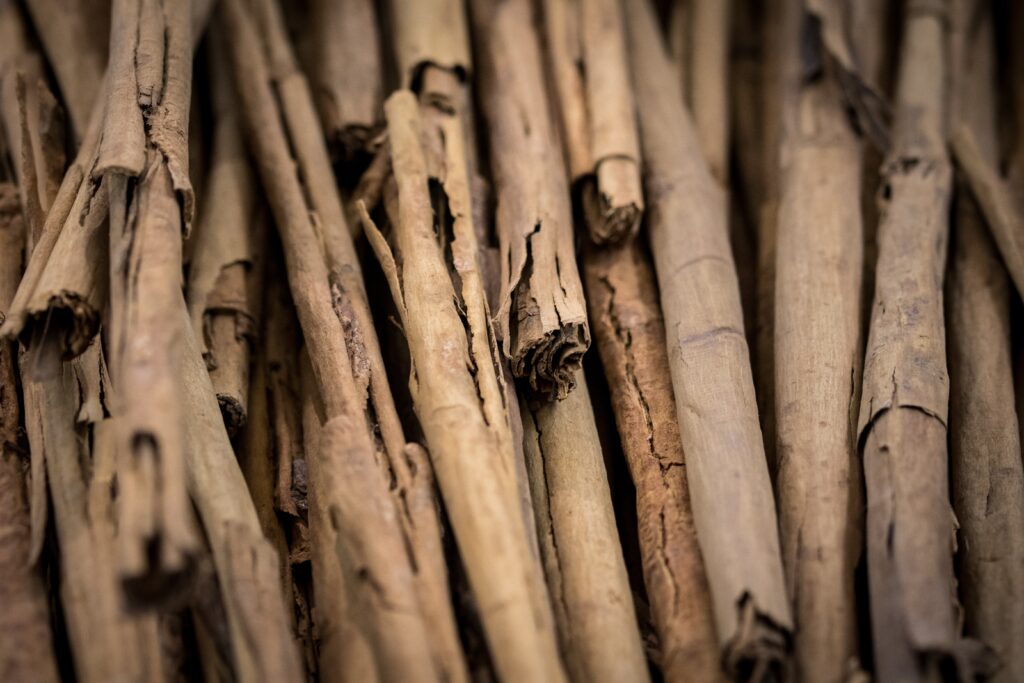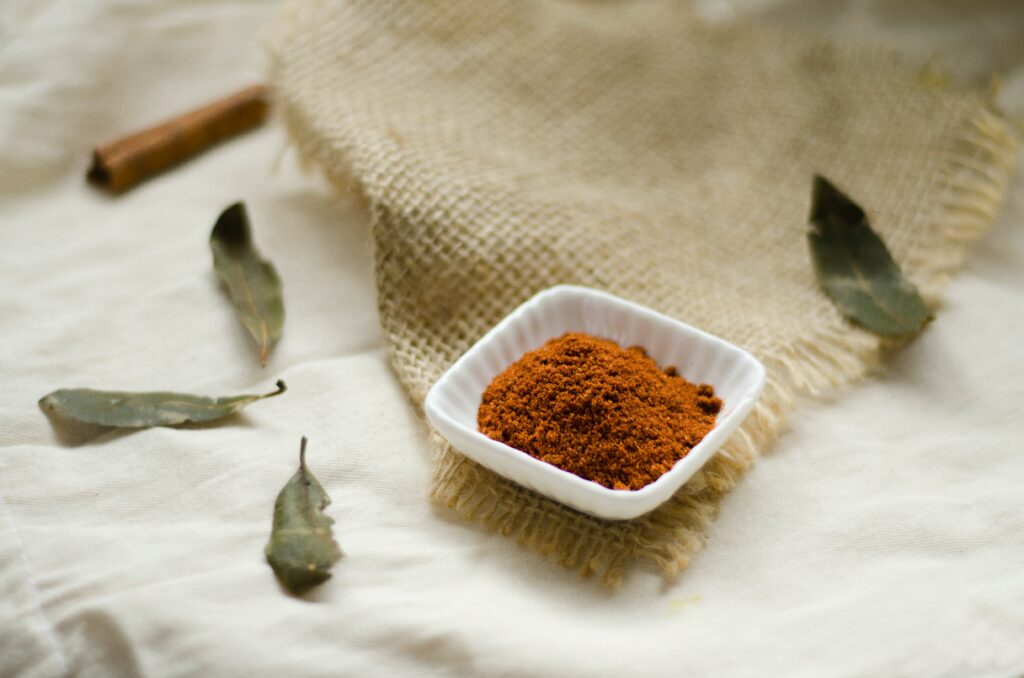Yes, normally you see headlines of spice up your dating, life, style, and more, but here I am about to encourage you to spice up you food. The typical American diet consists of the same few ingredients in different combinations and twists. Just take a quick look at the ingredients of a hamburger, hot dog, spaghetti and meat balls, taco, enchilada, tostada, burrito, pizza, steak breakfast and dinner; can you say red meat, cheese, butter, lard, oil, condiments, pinto beans, tomatoes, iceberg lettuce, onion, carbohydrates from potatoes, breads, and tortillas, salt and other very similar seasonings. When you venture away from these American diet staples and see the ingredients of some Mediterranean food, Indian food, Greek food, Japanese food, and others you see more vegetables, like in humus, and many more spices, like curry, turmeric, ginger, and cinnamon.
Often times we take cinnamon for granted, but cinnamon’s history is quite interesting; peppered with mythology, tax revenue, accent history, rituals, embalming, ancient Chinese medicine and it is even mentioned in the Bible. At one time cinnamon was even considered more valuable than gold. Cinnamon comes from the inner bark of a particular evergreen tree that grows wildly. These trees must be 30 years old before they are ready to be prepare for harvest, but will produce for many years after. Most of the world’s cinnamon is found in Sir Lanka and south India. However, cinnamon is also grown in Madagascar, Brazil, and the Caribbean; while a similar spice, with similar flavor to cinnamon, called cassia is produced in China, Vietnam, and Indonesia. Cinnamon is then tied into the history of the spice trades in India; for the history buffs this would be what was once known as the Dutch controlled West Indies.

Cinnamon is totally flavorful, but yet often an under used spice; and left for mostly deserts. Cinnamon can be purchased in sticks (or quills as they are called), oil, and powder. Today cinnamon can be found in things from deserts, potpourri, tooth picks, breakfast cereals, tooth pastes, meat seasonings, and more. Some will find it interesting there are different varieties, grades, and prices of cinnamon.
In the past two blogs, on sugar and diabetes, I eluded to the spice cinnamon and its benefits for type 2 diabetic patients. Some small clinical research suggests cinnamon has the following benefits:
- Anti-viral
- promotes healthy blood glucose levels
- healthy lipid and triglyceride metabolism
- promotes glucose utilization in skeletal muscle cells
- promotes blood flow
- anti-clotting
- anti-inflammatory
- anti-microbial and because of its anti-microbial properties some suggest its use as a food preservative
- slows stomach emptying
- improves response to insulin
- reduced LDL cholesterol
- reduced triglycerides
- reduced blood sugar levels
- its smell will boost brain function

Cinnamon is known also to contain other healthy nutrients such as manganese, fiber, and calcium. As always consult with your healthcare professional prior to adding cinnamon to your diet for health benefits. Cinnamon is not recommended during pregnancy, lactation, and those with a known food allergy to cinnamon. Most of the current recommendations set the dosage to be between 1-6grams, or about 0.25-1.25 teaspoon.
One way I like to get cinnamon in my diet is to add it to my breakfast oatmeal. Just remember cinnamon is not a cure for type 2 diabetes, it is only a helpful addition to a diet full of vegetables, fruits, nuts, seeds, eggs, and meats with little to no carbohydrates such as starches, refined flower, pasta, rice, alcohol, and sugar. The take home message here is that food can not only taste good but have multiple health benefits.
